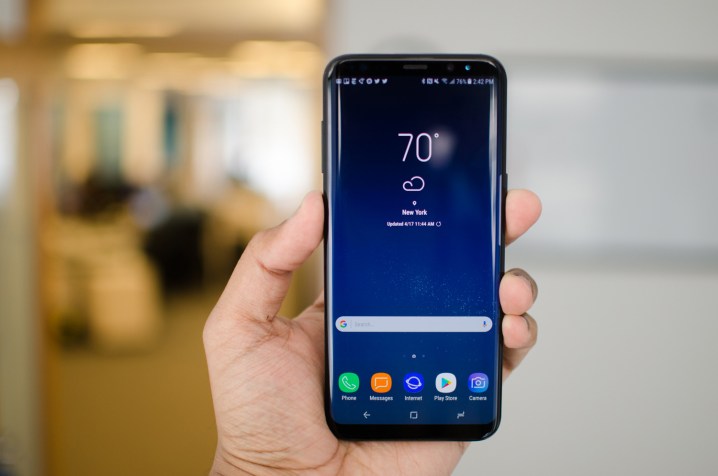
When the Samsung Galaxy S8 was released last year, Microsoft started selling its own customized version of the device, feature its apps and services front and center. Now, it looks like the deal between Microsoft and Samsung continues — the company has started selling a customized version of the Galaxy S9 and Galaxy S9 Plus on the Microsoft store.
The phones look the same as the standard version at first glance, and the hardware is exactly the same. The operating system will be the same too. It’s the apps that are different — users will get access to a range of Microsoft’s apps, like Excel, Skype, Cortana, and so on, right after setting up the phone.
To be clear, Microsoft’s apps are not preinstalled on the phone. Instead, you’ll simply be given the option to download and install the apps once the phone is set up and connected to Wi-Fi, according to a report from Trusted Reviews.
The Microsoft-customized phones won’t be for everyone, but they might be good for you if you’re plugged in to Microsoft’s apps and services and regularly use a Windows computer. We actually really liked many of Microsoft’s Android apps, and we think that downloading them on Android offers a better Microsoft mobile experience than Windows Phone ever did. Why? Well, Android is simply a better operating system, and if you use apps like Edge on both operating systems, it’s easy to switch seamlessly between devices.
To get the Microsoft version of the Samsung Galaxy S9 for yourself, you can head straight to the Microsoft Store, where the phones are available for pre-order. Thankfully, they cost the same amount of money as the standard versions of the Samsung Galaxy S9.
So far, the Galaxy S9 has been getting pretty good initial reviews. The phone features a pretty nice design and big, beautiful display. Under the hood it’s pretty impressive too — it offers Qualcomm’s latest and greatest chipset, the Snapdragon 845, along with 4GB of RAM in the standard Galaxy S9, or 6GB in the Galaxy S9 Plus. Perhaps the most interesting thing about the new phones, however, is the camera — which is among the first to offer a variable aperture.



